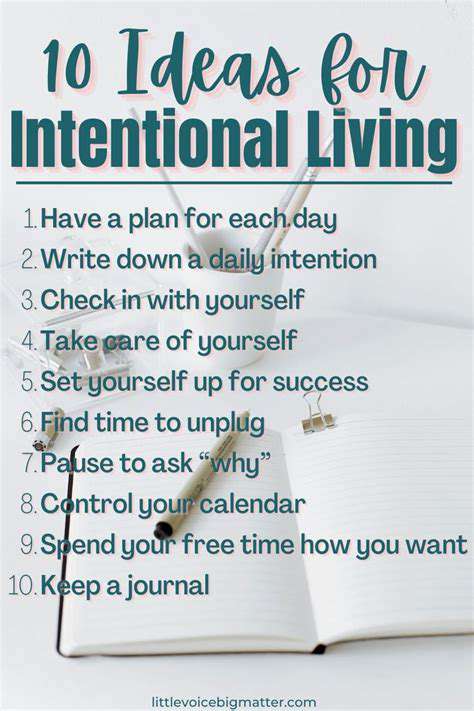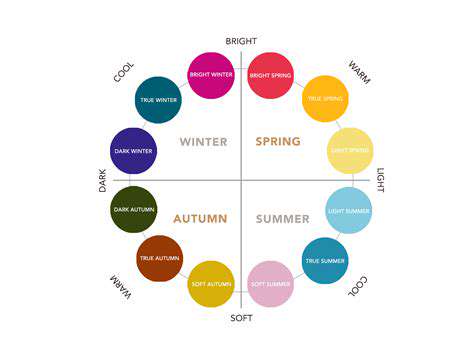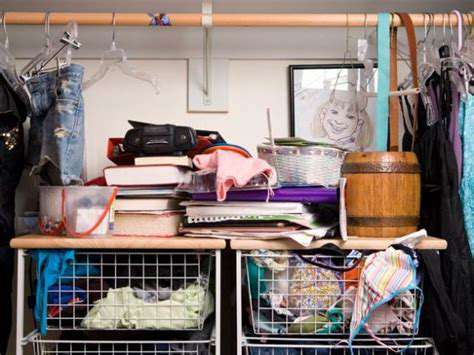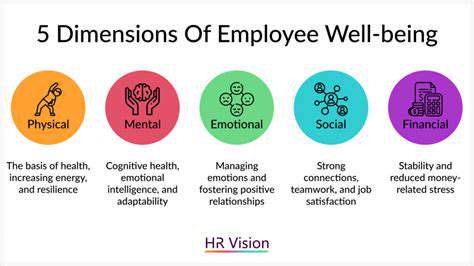Creating a Welcoming Entryway with Feng Shui
Creating a welcoming entryway is more than just aesthetics; it's about setting the tone for the entire home. A well-designed entryway instantly projects a sense of warmth and hospitality, inviting guests and family members to feel comfortable and appreciated. This initial impression sets the stage for the rest of the home, creating a positive and harmonious energy that flows throughout the space.
Consider the entryway as the first room visitors experience. It is often the first place guests see, and it should speak volumes about the home's personality. A cluttered or poorly lit entryway can feel unwelcoming and even detract from the overall beauty of the house.
Strategic Lighting for a Warm Embrace
Proper lighting is crucial in creating a welcoming entryway. Soft, warm-toned lighting, rather than harsh overhead fixtures, can create a cozy and inviting atmosphere. Consider strategically placed table lamps or wall sconces to complement ambient lighting and highlight architectural features. Good lighting plays a significant role in reducing stress and anxieties, making the entryway a calming and comforting space.
Think about the effect different light sources have on the overall mood. A dim, warm glow can encourage relaxation, while brighter lighting can promote a sense of energy and activity.
Color Psychology: Setting the Mood
The colors you choose for your entryway significantly impact the overall feeling. Warm colors like terracotta, honey, or cream can evoke feelings of comfort and relaxation. Cool colors like blues or greens can create a sense of serenity and peace. Consider the colors of your walls, the flooring, and even your entryway furniture when choosing a color palette.
Decluttering for a Clear and Open Space
A cluttered entryway can feel overwhelming and uninviting. A key element of creating a welcoming environment is decluttering. Designate specific areas for storing coats, shoes, and other items. Keep frequently used items within easy reach, while storing less-used items in a designated area to maintain a clear and open space.
This clear space helps to create an immediately calming effect, reducing stress and anxiety, and enhancing the flow of positive energy.
Incorporating Personal Touches for a Unique Vibe
Personal touches are essential for creating a truly welcoming entryway. Displaying family photos, artwork, or a decorative bowl of fresh flowers adds a personal touch that makes the space feel lived-in and inviting. Think about what represents your family's personality and incorporate those elements into the design. This helps to create a unique sense of identity and warmth.
Feng Shui Principles for Positive Energy Flow
Feng Shui principles can significantly impact the energy flow in your entryway, contributing to a welcoming atmosphere. Ensure the entryway is spacious and unblocked, allowing positive energy to flow freely. Use mirrors strategically to reflect light and enhance the sense of space. A well-organized entryway, in accordance with Feng Shui principles, promotes harmony and balance, creating a more inviting and positive first impression.
By carefully considering each aspect of your entryway design, you can create an inviting space that welcomes guests and sets a positive tone for the entire home.
Clearing the Path for Positive Energy Flow
Decluttering for a Clear Entrance
A cluttered entryway can act as a physical and energetic barrier, preventing positive energy from flowing into your home. Taking the time to declutter this space is crucial for creating a welcoming and harmonious environment. Start by removing any unnecessary items, such as old shoes, coats, or packages that have lingered. Consider organizing storage solutions like hooks, shelves, or baskets to keep frequently used items within easy reach but out of sight, maintaining a sense of order and openness. This simple act can significantly impact the overall energy flow and create a more inviting first impression.
Focus on creating designated spots for everything. A designated area for keys, wallets, and bags will not only keep your entryway tidy but also contribute to a more organized and efficient morning routine. If you have a lot of belongings, consider using stylish storage solutions that complement your decor. Think about how these organizational elements can add to the aesthetic appeal and create a feeling of calm and order.
Strategic Lighting for Enhanced Energy
Proper lighting is essential for guiding positive energy into your home and creating a welcoming ambiance in your entryway. Bright, natural light is ideal. If natural light is limited, strategically placed lamps and fixtures can help to illuminate the space, making it feel more spacious and inviting. Consider using warm-toned light bulbs to create a cozy and inviting atmosphere. Avoid harsh, overly bright lighting that can feel overwhelming.
The positioning of lighting fixtures is also crucial. Ensure that the lighting is evenly distributed to avoid dark corners and shadows, which can create a sense of stagnation or negativity. Think about the flow of light and how it interacts with the space, creating a balanced and welcoming environment.
Color Psychology and the Entryway
The colors you choose for your entryway can significantly impact the energy flow within your home. Warm and inviting colors, such as soft yellows, creams, or light pinks, can create a sense of welcome and encourage positive energy. Avoid overly dark or jarring colors that might create a sense of heaviness or negativity. Consider the overall design aesthetic of your home and choose colors that complement and enhance the existing ambiance.
Think about how the colors affect your mood and the energy you want to evoke. A calming blue or a cheerful green can contribute to a serene and positive feeling. Experiment with different color palettes and observe how they affect the overall atmosphere of your entryway. The right color choices can enhance the energy flow and create a truly welcoming space.
Incorporating Plants and Greenery
Incorporating plants and greenery can significantly enhance the positive energy flow in your entryway. Living plants bring a touch of nature indoors, promoting freshness and vitality. Choose plants that thrive in the amount of light available in your entryway, ensuring they remain healthy and vibrant. Consider the size and type of plants to avoid overcrowding or creating a cluttered look.
The presence of plants can create a sense of calm and serenity, especially if you choose plants with fragrant flowers. Beyond aesthetics, plants can also contribute to purifying the air, creating a healthier and more welcoming environment. A well-chosen arrangement of plants can truly transform your entryway into a serene and inviting space that harmonizes with the positive energy flowing into your home.
Color Psychology and the Entryway's Ambiance
Impact of Color on First Impressions
The entryway, often the first space visitors encounter, sets the tone for the entire home. Color psychology plays a crucial role in shaping this initial impression. Warm, inviting hues like soft yellows and muted oranges can create a sense of coziness and welcome. These colors evoke feelings of happiness and warmth, making guests feel immediately comfortable. Conversely, cool colors like blues and greens can promote a sense of calmness and serenity, ideal for creating a tranquil and sophisticated entryway atmosphere. Choosing the right color palette is key to effectively communicating the desired ambiance and setting the stage for a positive guest experience.
A strategically chosen color scheme can significantly influence how visitors perceive your home. A bold, vibrant color can add a touch of personality and excitement, while a more subdued palette can project an air of elegance and sophistication. Understanding the psychological impact of different colors allows you to curate an entryway that not only looks visually appealing but also evokes the desired emotions and sets the right mood for your home. The subtle interplay of color can greatly affect the overall atmosphere and create a welcoming space that resonates with your personal style and sets the stage for a wonderful experience for your guests.
Color Choices for Different Styles
The entryway's color palette should complement the overall style of your home. If your home boasts a contemporary design, a sleek and modern color scheme featuring neutrals like gray, beige, or white with pops of accent colors can create a clean and sophisticated entryway. These neutral tones allow the architectural elements and furniture to stand out, creating a visually appealing and uncluttered space. Think clean lines and a minimalist approach when choosing colors for a contemporary home.
For a more traditional or rustic style, warm earth tones like terracotta, burnt orange, or deep greens can evoke a sense of comfort and familiarity. These colors can complement wood accents and traditional furniture, creating a cozy and inviting atmosphere. Textures and patterns also play a role in creating a welcoming ambiance. Consider incorporating patterned rugs or wallpaper to add depth and visual interest to the entryway while maintaining the overall style.
Ultimately, the best colors for your entryway depend on your personal taste and the overall aesthetic you're aiming for. Careful consideration of color psychology and your desired style will ensure that your entryway is not only visually appealing but also creates a welcoming and lasting impression on your guests. Experimenting with different color combinations and exploring various palettes can lead to a unique and personalized entryway that reflects your personal style and creates a truly welcoming first impression.
Remember to consider the natural light in your entryway when choosing colors. Dark colors can absorb light, making the space feel smaller and darker, while lighter colors can reflect light, making the area feel brighter and more spacious.
Incorporate elements like artwork, mirrors, and decorative accessories to further enhance the color scheme and create a cohesive aesthetic.













